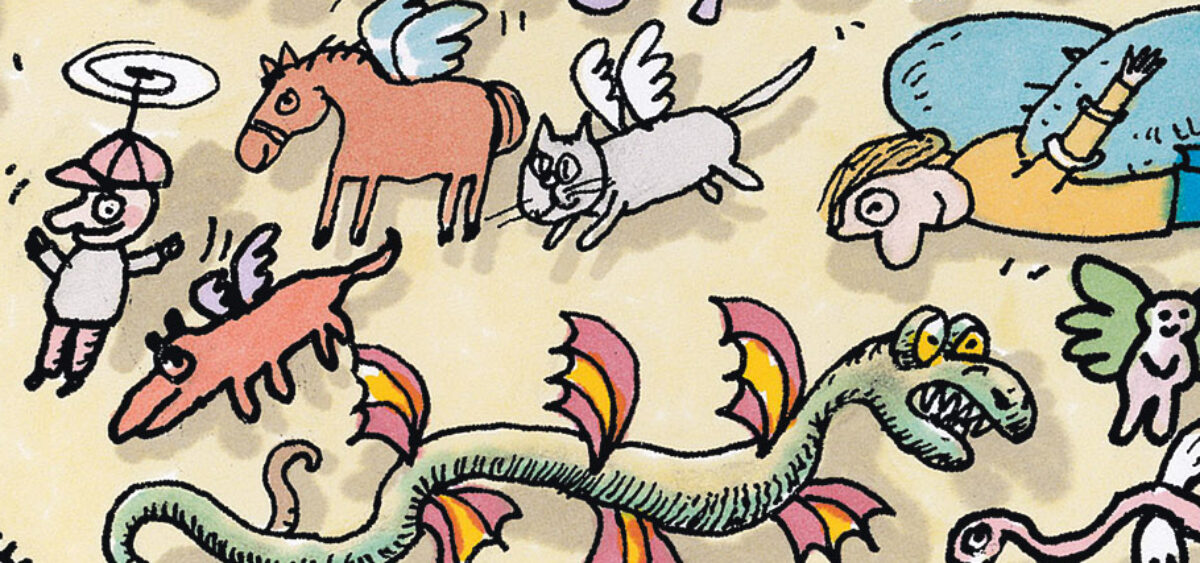
Those that leap and flutter through fairy tales, myths, legends, folk tales, epics and holy books.
If we examine the capacity to fly in terms of symbolism, we should take note of the fact that it is associated with the capacity to transcend, to break free of the boundaries of everyday life, with absolute freedom and with victory. Dreams about flying seem to confirm these observations, since we are often so excited that we wake up. In what is probably the oldest known form of religious experience – that is, shamanism – the shaman flies away to other kingdoms during a trance, experiencing ecstasy, healing, or making contact with the gods. Sometimes he wears a feather cloak to do so. The Rigveda, the oldest of the Vedas, the Hindu sacred texts, contains the following statement: “Those who know, have wings.” The sign that Taoist sages were reaching immortality was when they grew feathers. Many gods are portrayed with feathers or imagined as birds (for instance Osiris, Horus, Maat, Zeus). The ability to move through the air as seen in the animal kingdom has clearly always fascinated the human mind. In various cultures, such as those of the ancient Egyptians and the Slavs, birds symbolize the soul. Birds were also seen as intermediaries between men and gods, or their behaviour was used to predict the future (ornithomancy). At Jesus’s christening, the Holy Spirit took the form of a dove. And so on, and so forth.
Alongside ordinary zoology, there is also the infinitely abundant zoology of the fantastic; there seems to be no society that has failed to contribute





